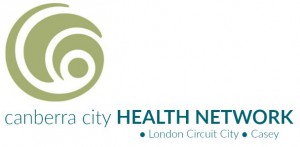The GLA:D Program: Exercise Therapy for Hip and Knee Osteoarthritis
Canberra City Health Network is proud to offer the GLA:D® program for people who suffer from hip and knee osteoarthritis. GLA:D® (Good Life with osteoArthritis Denmark) is a physiotherapy led education and strengthening program developed by researchers in Denmark that is internationally recognized as best practice for people with knee or hip osteoarthritis symptoms. This program has been proven to reduce pain and improve quality of life through education and group exercise. One year after completing GLA:D® Australian participants reported a 35-42% average pain reduction, 17-29% reduction in pain medication and 39% improvement in joint related quality of life.
Osteoarthritis is the leading cause of mobility issues in people over 65. OA affects 30% of the Australian population between ages 50 to 70, but can also affect people as young as 30 years of age. The main joints Osteoarthritis affects are the knee, hip and hands. A clinical diagnosis of osteoarthritis is made based on your symptoms. Symptoms can start for no apparent reason and can vary in severity between different people. Early symptoms are more commonly felt in the mornings and can include: pain when moving or loading the joint, joint stiffness, less range of motion, heat and swelling at the joint, muscle tightness and difficulty moving around.
Osteoarthritis affects the whole joint capsule, but is most notably characterised by a thinning of the articular cartilage (the cartilage that covers the end of your bones). In a healthy joint, the cartilage creates a smooth surface so the bones can slide easily when moving. When under load (walking, squatting, kicking the soccer ball) cartilage acts as a shock absorber that dissipates load over its surface so that no one area degenerates more than the others. Osteoarthritis occurs if healthy cartilage is exposed to excessive loads over a long period of time, or if unhealthy cartilage cannot handle normal loads. In a healthy joint, there is a balance between regeneration and degeneration of cartilage, a constant cycle of wear and repair. In an osteoarthritic joint there is more degeneration than regeneration of cartilage. Cartilage can regenerate if a healthy amount of load is applied to the joints.
Exercise, education and weight loss is recommended by international clinical guidelines as the first line of treatment for people with osteoarthritis, however in Australia treatment usually focuses on surgical interventions. The GLA:D® Australia program offers a safe exercise based alternative.
What does the GLA:D® Australia program involve?
- An initial appointment with a Physiotherapist explaining the program and collecting individual baseline measures on your current functional ability
- Two osteoarthritis education sessions which teach you about OA and self-management strategies
- Group neuromuscular training sessions twice a week for six weeks to improve muscle strength and neuromuscular control which leads to a reduction in symptoms and improved quality of life
Who can participate in GLA:D®?
- Individuals who experience hip and or knee osteoarthritis symptoms, regardless of severity
- Individuals who have needed to see a health care professional due to hip or knee joint problem
You do not need a GP referral to participate in GLA:D®, but other health-related issues may prevent you from participation. If you are unsure of your eligibility, please contact the team at Canberra City Health Network to discuss the program.
Frequently Asked Questions:
Do I need to have an Xray to show I have Osteoarthritis?
No, a clinical diagnosis for Osteoarthritis is based on symptoms. If you have hip or knee pain talk to your physiotherapist or exercise physiologist to discuss your symptoms and eligibility.
Who does it help?
GLA:D® has been shown to help people of all ages with mild, moderate and severe osteoarthritis by reducing pain, increasing mobility and enhancing quality of life. Often surgery such as joint replacement can be avoided.
What happens in a session?
The GLA:D® exercises are a set of 10 exercises, plus warm-up and cool-down, aimed at improving the strength and function around your hips and knees. Sessions are run in small groups of around four to six people. In each session, the same exercises are done by each person at the level appropriate for them. The physiotherapists and exercise physiologists who run GLA:D® programs have been trained to customise the program to suit the individual: YOU.
The GLA:D® education sessions are an opportunity for the physiotherapist to tell you about the latest research evidence and for you to ask questions and discuss it with the physiotherapist or exercise physiologist and other participants.
Will it hurt?
Whenever you do new exercise, it’s normal and acceptable to have very mild pain during and after the session for up to 24 hours – and maybe a bit longer at first. Your physiotherapist will help you learn how to monitor your pain so that you can challenge yourself without making your pain worse in the long run.

